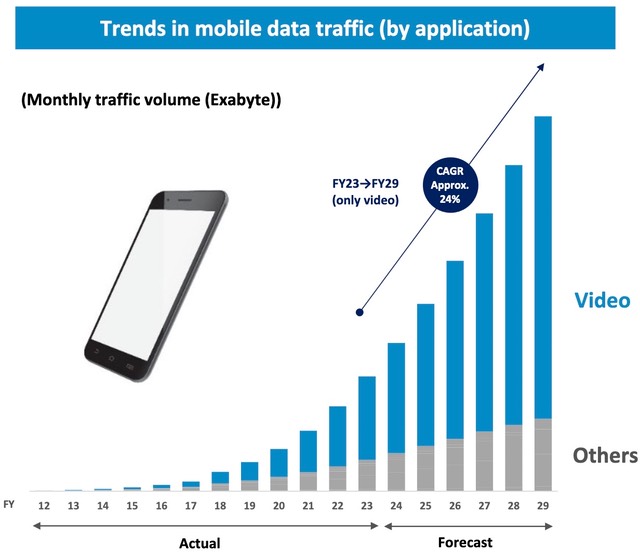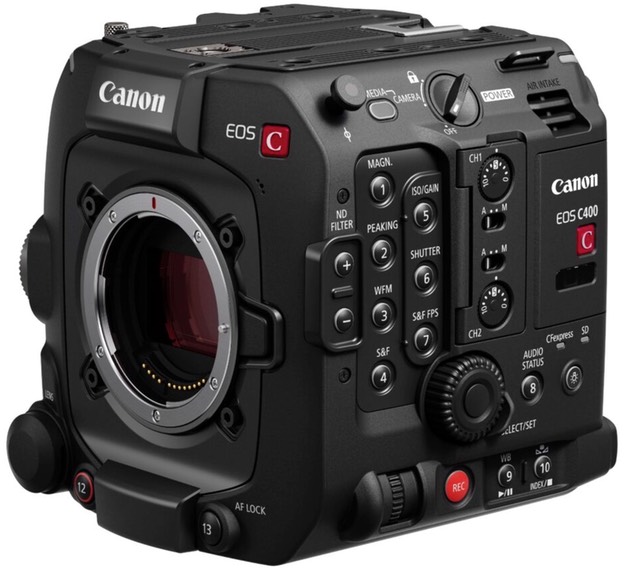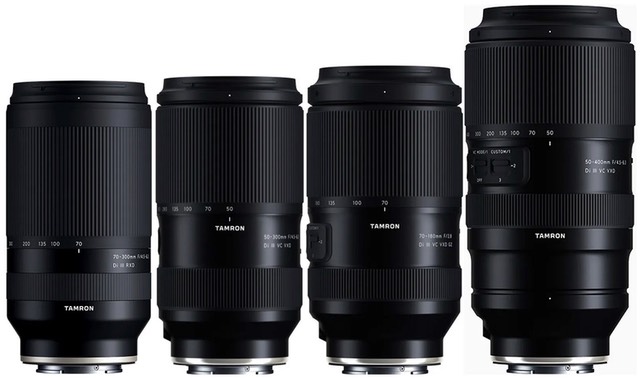We're in a time period where a lot of product is being introduced and information added to, so I've opted to wait until the end of the week and use this summary article to cover it all. One of the reasons for the new gear push was the Cine Gear Expo in Los Angeles, which has a long history of seeing new mirrorless offerings that cater to the video community.
Discounts
I usually don't post much about the seemingly on-going sales that happen every month. However, for June I noticed a few things that warrant attention.
Canon got more aggressive with discounts for June (many 10% or higher), but more interesting is that B&H [disclaimer: this site's exclusive advertiser] is offering their PayBoo sales tax rebate on top of that, meaning that in some areas of the country, you can get a 20% discount from the price you'd normally pay (or pay locally).
In talking with dealers, they all have strong words about Canon at the moment, and those don't tend to be positive. They all report that they're getting pushed hard to move boxes, but not getting the other support they need to do that. One dealer told me that whenever he gets any new notification of discounts from Canon that's inevitably followed by a correction a day or two later. What's going on at CanonUSA?
Meanwhile, canonrumors.com this week had the headline "Expect more delays from Canon for both cameras and lenses." In that article was the sentence "We don't think Canon can stress its retail network like Fuji has with the X100VI." No, not the same way, but consider my previous paragraph: Canon is stressing dealers to unload unsold inventory on the shelves. When a big company like Canon, Nikon, or Sony tries to launch a new version of a product when significant inventory is sitting unsold, the dealers almost always ask to be able to return that old product for credit before taking on the new. Personally, I think Canon has an inventory problem that's not being acknowledged publicly, and that's going to push back launch of some products.
Panasonic is also high on the discount list this month, with US$100 to US$500 off on almost all of their L-mount lenses, and up to US$600 on the S5 II body.
If you're into video, the Blackmagic URSA Mini Pro 4.6K G2 is US$3000 off for the moment, making it just US$3000 in price. This is a pro production rig. Of course, it's already back-ordered ;~).
In the "raises eyebrows" category, Cine-D, a Web site dedicated to video use, announced a Cine-D CFexpress card (made by Angelbird). It's a limited edition 1TB fast sustained write card for US$179. I'm personally curious about how you justify accurate, useful information to your customers when you're pedaling someone else's gear to raise money. Moreover, I'm curious how a US$300 card sells for US$179 with a media site's logo on it ;~). Maybe I should talk to some card companies about a byThom card...
Sony's Plans
In a two-day conference at the end of May, Sony outlined their goals and plans for all of their businesses. Buried in the 262 slides were a few pieces that will be of interest to mirrorless users.
A lot of photo news sites missed it, but one of the key points I caught was strengthening "device coordination as data communication devices." Highlighting that point was an Sony A1 ;~). Other sites did catch the expectation of an average sales growth in the imaging business of 8% annually over the next five years. Cameras, lenses, and "solutions" at Sony are all planning growth.
Some of that growth—including that slightly cryptic "solutions"—intersects with other aspects of Sony's plans. For instance, using cameras to track players in sports and commercializing the result (both via animations and actual data points). That sort of plays back into other of Sony's businesses, including the both the content and the PlayStation side.
As with everyone these days, "spatial content" is also playing a large part in the device plans. While Sony is capable of building their own 3D Vision headset, I took their comments in this area to mean that they want to participate more in the creation of spatial content, which is consistent with their other businesses.
A number of news sites picked up on Sony's intention to control 60% of the image sensor market—in 2025; today they're in the mid-50's—but they didn't seem to report that Sony is saying that they're a year behind their ambitious plans there (and will fall significantly short of their 2030 goals). Moreover, Sony's capital expenditure is expected to be only 70% in the next three years versus what it's been in the past three, which implies that fab unit proliferation is going to slow.
Another thing that was missed was that Sony sees monthly mobile Internet traffic being dominated by video, and they claim it already is:

Given that this was in the presentation about image sensors, you probably can guess what I'm about to write: the day of the stills-only camera are pretty much gone. You have to be hybrid (video+stills) at a minimum now. Personally, I see devices such as the DJI Osmo Pocket becoming more and more on the forefront here, and that has implications on just what happens with the historical interchangeable lens camera market.
But here's the kicker in Sony's sensor presentation: still images "comes close to the human eye through larger sensor and AI, and in some cases even surpasses it." But for video "[Sony] believe further improvements in performance are required in each characteristic." Those characteristics: dynamic range, noise, readout speed, power consumption, and resolution. So please stop sending me emails that say "the camera makers should just make better still cameras and forget about video." As I've reported before, what's happening now is that video demands are driving all image sensor improvements. Thus, you'd better hope that your camera maker is going to keep making hybrid mirrorless cameras, otherwise their primary image sensor supplier is telling them that not much more needs to be done.
The Big News
Cameras always are the thing people look for first, and this week we had two: the Panasonic GH7 and the Canon Cinema C400.
I don't generally cover the video-oriented mirrorless bodies on this site, as they tend to be expensive and less useful for hybrid (still and video) use. This is a photography site, after all. But we're getting more and more of these specialized cameras, and it's important to note what is happening in this area.

Probably aren't going to use that for still photography, are you?
The Canon C400 is an example of one of these video-first cameras, and with it, we also got the first true RF video-oriented lens, the 35mm f/1.4L VCM. The C400 is a 6K stacked BSI capture and features a triple-gain ADC. Price is US$8000 for the body, US$1500 for the new lens.
The GH7 continues the long line of video-oriented m4/3 bodies from Panasonic. The "news" here is mostly that the GH7 has moved on to the new sensor and features of the recent G9 II, which means a boost to 25mp. Other things that are of interest include the new Lumix LAB app support, 32-bit float format for audio via a new version of the DMW-XLR2 unit, and internal Apple ProResRAW video. To keep the camera going for long takes, the GH7 now has a built-in fan. Another interesting tidbit: Panasonic licensed ARRI LogC3 so that you can capture video with the GH7 that will tightly integrate with the big ARRI cameras.
Aside: the fact that all the fabs making large image sensors are at capacity (or beyond) at the moment means that in order to up quantity of the newer sensors companies are giving up older image sensors. For models to stay in the lineup for sale either the company had to have built up a stock of older image sensors, or has to move their products to fewer current sensors. Given the economics involved, it's mostly the latter that's happening. Some companies, such as Fujifilm, got lucky on their timing of a new sensor. In their case, the 40mp APS-C sensor produced for them by Sony Semiconductor. There's a reason why cameras you wouldn't normally associate with high pixel counts, e.g. the X100VI and X-T50, got the 40mp sensor: it's easier to increase production of a sensor already on fab than putting a new one on fab.
Finally, Sony did something interesting with their top end video camera, the BURANO: they published a firmware update road map. This isn't the first time that the pro video side of Sony has done that, but it does indicate something I think we're going to see more and more often top-end pro cameras of all sorts: the camera ships before the software is done. Because of that, you run into the dilemma of whether you announce features at launch or you wait and surprise everyone. Note that Nikon has been mostly surprising its pros with Z9 firmware updates. I'd argue that the road map approach is better at assuaging the pros that are paying top dollar to keep competitive.
Oh, in case you're wondering, the upcoming BURANO 1.1 sometime in June will update will add some anamorphic support, Monitor and Control app support, and a new protocol over Ethernet. The 2.0 update adds new recording formats, monitoring improvements, some new tools derived from the VENICE camera, new stabilization abilities, and focus breathing compensation.
Minor News
Fujifilm announced firmware updates for the GFX100 II (2.2) and the 55mm f/1.7 GF lens. Canon announce firmware 1.4.0 for the R6 Mark II, 1.3.0 for the R8, 1.5.0 for the F7, 1.6.0 for the R10, and 1.2.0 for the R50.
Lenses, Lenses, Lenses
We learned about new lenses that are big (literally) news, and other lenses that just add to the choices we already had. I'll go about this in alphabetical (company) order.
Samyang is now providing their 35-150mm f/2-2.8 lens in the L-mount. Previously it had only been available in the FE mount.
Sigma announced the 28-45mm f/1.8 Art lens for FE-mount and L-mount, which they're touting as the "fastest zoom lens." At US$1350 it's decidedly less expensive than the other fast mid-range zoom (Canon 28-70mm f/2L, for example), but given that aperture values are rounded numbers, there might not be as much difference in light gathering between them as you might expect.
The thing that strikes me is that this new Sigma zoom's limited range also limits its appeal. The photographer this lens would appeal to is one that is currently mostly using 28mm, 35mm, and 50mm f/1.8 (or maybe f/1.4) primes. Instead of three smaller lenses you'd have to keep swapping in and out, you can just use one big heavy one (nearly two pounds ;~).
Curiously, I think Sigma thinks that user isn't a photographer, but a videographer. I write that because the lens has a lot of things that cater specifically to the videographer (declickable aperture ring, lockable aperture ring, minimized focus breathing, no weight shifting while zooming or focusing [gimbal friendly]), and so on.

Tamron surprised everyone by cramming another lens into their telephoto offerings. Previously, we've had the 70-300mm and 50-400mm (both f/4.5-6.3). Now we get the Tamron 50-300mm f/4.5-6.3. Not only does it squeeze in between with focal range, but it squeezes in between in price (US$800), size (5.9"), and weight (23.5 ounces). By the way, the published MTFs for this lens look quite good.
TTArtisan released two lenses (both of which had been previously announced, or at least leaked): the autofocus APS-C 56mm f/1.8 for Z-mount, and the full frame manual focus 250mm f/5.6 reflex lens for the m42 mount (which you can adapt to almost any other mirrorless mount). With almost two dozen lenses now with a wide dispersion of mounts and focal lengths, it feels like TTArtisan is throwing spaghetti at the wall to see what sticks. They're not alone in that; several of the other Chinese lens makers seem to have the same tactic.
